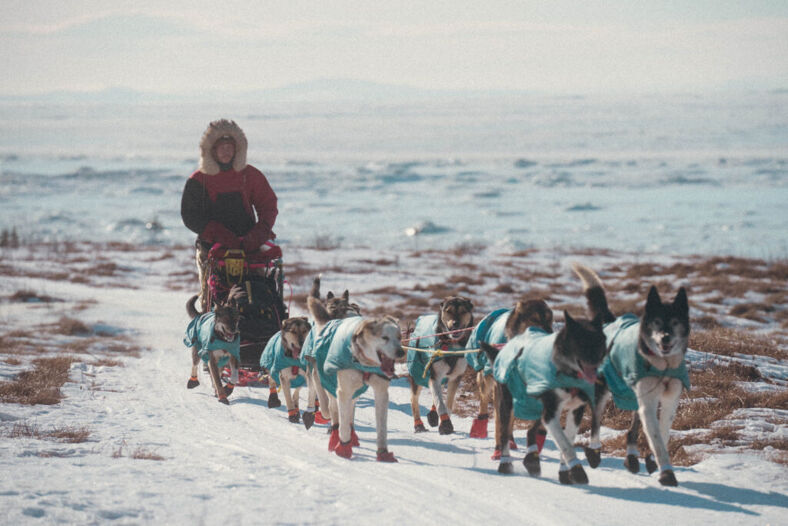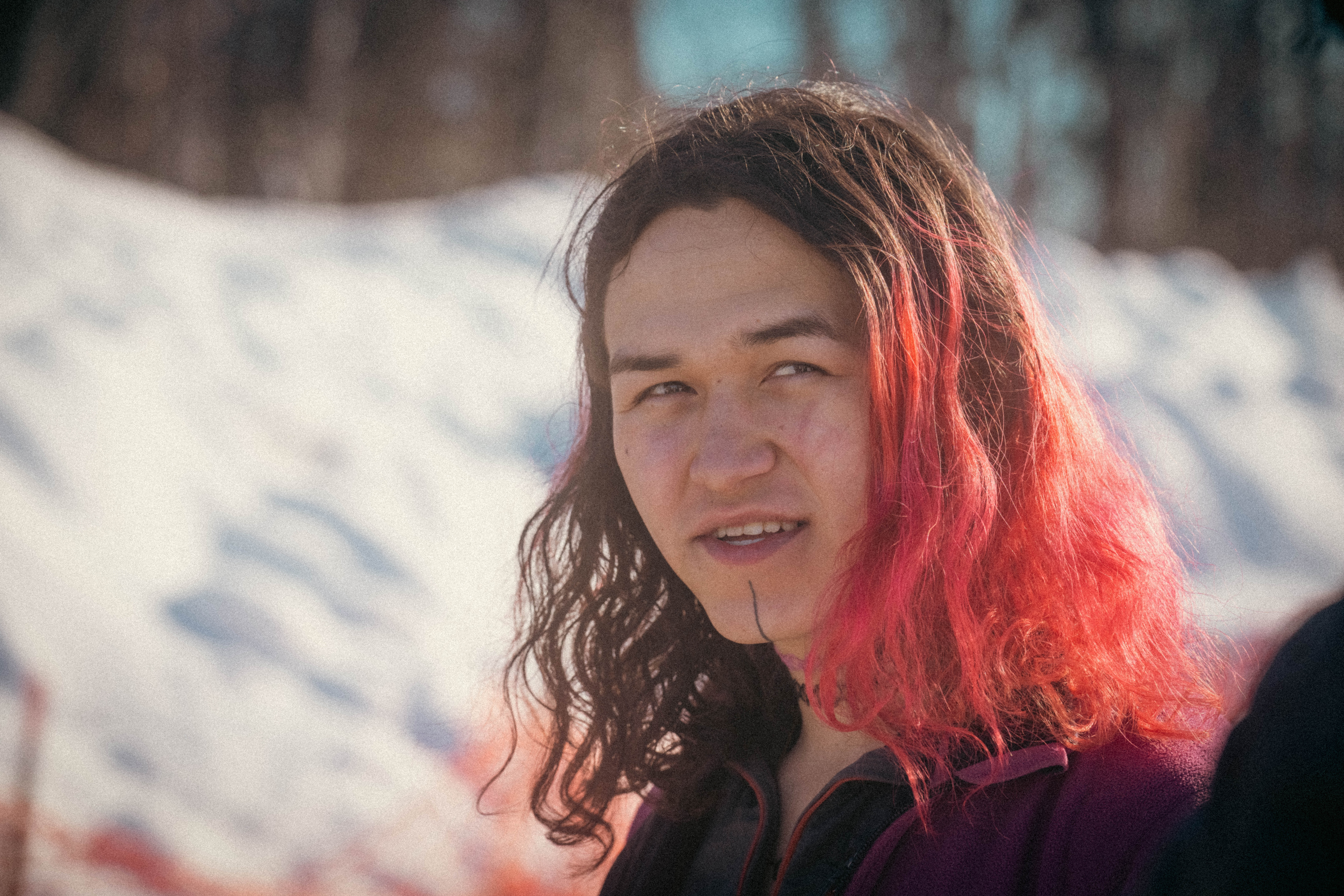The 2024 edition of The Iditarod ended early last Saturday morning with the last musher crossing the finish line in Nome, the remote city in western Alaska. The Red Lantern, the race’s symbol of the commitment and perseverance in the face of the challenge of 1,000 miles through Alaskan wilderness, was claimed by that final musher.
Two years ago that award was placed in the hands of Apayauq Reitan, the first transgender woman to start and finish what is known as “The Last Great Race.” She was also the last to finish, that year in 2022.
“I’m proud that I finished,” she recalled. “The hardest part of the race was that I had to drop a couple of dogs because of the punchy snow and they were limping. I ended up finishing with six dogs and that’s the minimum you were allowed to have, and there were some of toughest storms I’ve ever seen in my life.”
The journey of the race mirrored her journey through her life. It’s a journey chronicled in the documentary film short “Apayauq”. Filmmaker and conservationist Zeppelin Zeerip directed the short and followed and filmed Reitan over the 13-day trek from start to finish.
Get off the sidelines and into the game
Our weekly playbook is packed with everything from locker room chatter to pressing LGBTQ sports issues.
The 16-minute film is filled with intense natural beauty, along with the grit of a lone woman and a team of sled dogs making their way across Alaska.
It was also a means of telling her larger story within the story. On Transgender Day of Visibility 2021, Reitan posted her coming out on her Facebook page.
In 2019, she started and finished her first Iditarod but felt something was missing. She wasn’t out, although she said from childhood she always knew who she was. After coming forward into herself, she then decided that she had to bring all of herself back into her sport, and one of its most demanding events.

“I had to run it again as my true self so the representation would be real,” Reitan said. “Being that trans girl on Twitter who did the Iditarod before she came out wouldn’t be as impact as she went and did again.”
Competing in the race again and chronicling it for her was also a way to reclaim a sport but also her heritage and her voice. When she came out, she chose her grandmother’s name as a symbol of Iñupiat roots.
Her transition tied in closely with building an even stronger bond to those roots. That includes a prominent symbol of this reclamation seen through the film: her chin adorned with a tavluġun, a tradition among Iñupiat women signifying inner strength, achievement and maturity.
Reitan received hers as she was preparing for the race in 2022.
“I was talking to my tattooer and I was unsure if I, as a trans woman, could get one,” she remembered. “I asked her about this and she was supportive and said ‘you are an Iñupiat woman’. That was very powerful.”
Since completing the race and the film, Reitan has used her platform to speak out for trans rights. Within the film, she spoke out on the growing anti-trans climate, including showing some of the nasty direct messages she received when she publicly came out.
Last year she became a public voice against anti-LGBTQ legislation in Alaska. The day before the Alaska premier of the film in state capitol at Juneau, Reitan testified at a hearing against a proposed Alaska’s “Don’t Say Gay” law which included a number anti-trans planks.
“I’m worried about bills like this,” She stated in the hearing. “I’m worried about my future in Alaska.”
She also said she wants to also use this film to show a piece of trans joy and thriving. In many ways she succeeded.
“I was doing it again for other trans people to be inspired and have a story that trans hear about a trans woman doing well,” Reitan said. “It just very special that it people did find a lot of joy in it.”








































